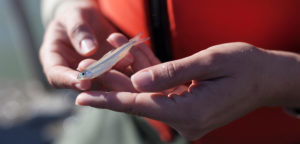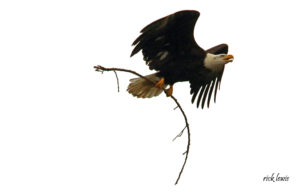What brings together professionals and amateur naturalists, butterfly specialists and evolutionary biologists, children and adults, all in the name of endangered species?
Try the Golden Gate National Recreation Area’s Big Year for Endangered Species, a year-long competition created to raise awareness about local endangered species while encouraging people to help restore habitat throughout the recreation area. The event started in January 2008 and will culminate with an awards ceremony and snowy plover birding session at Crissy Field on January 10, 2009.
When they started the competition, participants each received a list of 33 endangered species that ran the gamut – from birds to marine mammals and plants to amphibians and reptiles – and instructions to look for them on GGNRA lands during 2008. Each species also came with an action item that would help restore its habitat in the Bay Area.
To add intrigue and friendly competition to the event, organizers provided incentives for racking up the most sightings and action items. Gift certificates to an outdoor apparel and goods store will be given out in the amount of $2,000 for the first place winner and $1,000 for second. Participants have taken the competition quite seriously, and a leaderboard on the event website reports who holds the top five places. As the event came to a close, the race for first place was in a dead heat between lepidopterist Liam O’Brien and amateur Steve Price tied at 52 sightings and action items each. Close behind is evolutionary biologist David Seaborg with 50 points.
Each of these competitors brings a particular passion to the table, and each has something unique to gain from participating.
Seaborg runs two conservation organizations, the Foundation for Biological Conservation and Research and the World Rainforest Fund. His participation also caused Price and O’Brien to redouble their efforts. “He’s very studious,” says Price. “He had calculated how no one could beat him, so that started the fire under Liam and me. It’s been a great underlying drama line.”
As for Price, who is a brand consultant in San Rafael, he learned of the competition from an article in the Marin Independent Journal and decided it would be a great way to get out into the GGNRA’s parklands and experience nature with his family. “I’m probably the real rookie among the front runners… I have no biology background at all,” he says. “On many hikes my family has gone with me and they’ve enjoyed it. I’m also kind of a list person, and it seemed like an unusual adventure.”
O’Brien, an authority on San Francisco butterflies, says he enjoyed an expanded appreciation of the natural world during the Big Year. His specialty in butterflies has fueled his efforts in the Green Hairstreak Corridor Project, which works to connect two populations of an endangered butterfly species in San Francisco. “It’s made me a better, more well-rounded naturalist,” he says of the competition, “I went into new worlds. I went into botany a lot more.” O’Brien also says he felt rewarded by a closer connection to the natural world and the species he was searching for. “We were all out there at Sharp Park, we were pulling trash out of the creek,” he says, “and right across the creek were six California red-legged frogs sunning themselves. It really helped make the connection between the work [and the species].”
Indeed, viewing wildlife brought excitement to young and old. Another Liam, this one an 11-year-old, spotted the California least tern on GGNRA lands during a birding outing. “They’re easy to find in the East Bay but difficult to find in the national park,” says Big Year organizer Brent Plater. “He had some great sightings during his action items, too.”
Some participants went to great lengths to see rare species, such as the California freshwater shrimp. Price and O’Brien, though reluctant to say where exactly, took to a stream in snorkel gear, wetsuits, and waders after getting a tip about some local shrimp on GGNRA lands. Seaborg saw the crustaceans in a quick net-and-release operation with another naturalist. Other finds were easier to come by, but no less breathtaking. At Fort Funston, says O’Brien, “About 20 of us saw a humpback [whale] right there in the break.”
While Seaborg has completed all 33 action items, Price and O’Brien had time to complete one or two more each as of last week. Last-minute species sightings will be much more difficult to pull off, as some plants are all but impossible to find. Even excluding the showy Indian clover, which has been deemed extinct twice in the past hundred years and only blooms hypothetically on GGNRA lands, most plants are unidentifiable without flowers during winter. Rarely seen animals populate the Big Year checklist as well. “The clapper rail has historic breeding habitat in Tomales Bay but no one’s seen one in a long time. Same thing with salt marsh harvest mouse,” says Plater. “It could end up in a tie,” he goes on, “I don’t want to say for sure, these guys could have some more tricks up their sleeves.”

.jpg)



